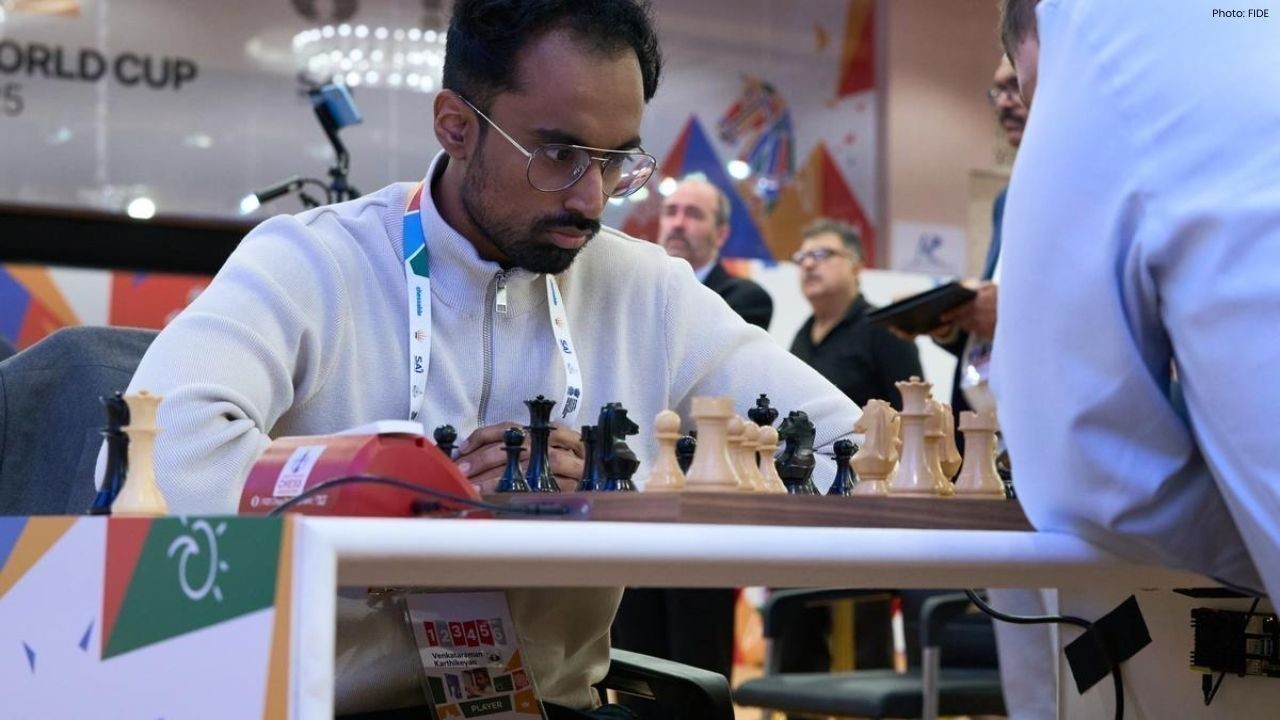
Post by : Anis Karim
In the modern era, technology has become inseparable from everyday life. Workplaces, banking, communication, transportation, healthcare — every part of life runs through digital channels. But with this transformation comes a pressing reality: the more connected we become, the more exposed we are.
Artificial intelligence has amplified this dynamic dramatically. AI is now a force multiplier for cybersecurity — both as a shield and a weapon. It can help detect threats in milliseconds, yet also generate cyberattacks with frightening sophistication. This dual nature makes cyber-resilience not just a technical requirement, but a survival principle for businesses and individuals alike.
Cybersecurity used to be a specialized concern. Today, it is everyone’s responsibility.
For years, cyber threats grew steadily — phishing emails, password breaches, malware. Now, AI accelerates everything. Threats once crafted manually are now automated, evolving faster than human teams can respond.
AI has changed the threat landscape by enabling:
– automated breach attempts at unprecedented speed
– deepfake manipulation
– AI-generated phishing messaging that feels human
– password-guessing engines trained on behavioral patterns
– large-scale data-scraping and identity profiling
– attacks designed to study and adapt in real time
The sophistication level is no longer amateur — it’s algorithmic. That means cyber-resilience must evolve too.
Traditional cybersecurity focuses on defense: firewalls, antivirus software, safe networks. Cyber-resilience goes further — it is the capacity to withstand, respond and recover.
Cyber-resilience means:
– expecting that threats will arise
– preparing for them proactively
– minimizing damage when attacks occur
– ensuring rapid recovery and business continuity
With AI’s speed and unpredictability, resilience is now the new gold standard. It’s not “if” an incident happens — it’s “when.”
For all the technology available, the most common vulnerability remains human behavior. Hackers know this — and AI-powered social engineering is a serious threat.
Attackers now use AI to:
– mimic voices
– forge corporate emails
– impersonate colleagues
– generate believable messages based on personal data
– create deepfake video requests for fund transfers or file access
AI doesn’t just break systems — it breaks trust. That means training and awareness are as important as firewalls and servers.
Some of the most significant AI-driven risks include:
Deepfake Fraud
Fake voice and video requests used to authorize transactions or share sensitive data.
AI-Generated Phishing
Convincing messages created at scale, customized to each victim’s language, tone and habits.
Autonomous Hacking Tools
Scripts that scan millions of systems for vulnerabilities in minutes.
Data Poisoning
Attacks that corrupt AI training datasets to influence outcomes in business systems.
Ransomware Evolution
Malware powered by smart decision-making, targeting high-value systems.
Identity Cloning and Credential Harvesting
AI scraping digital footprints to mimic real users.
The threat spectrum is broader and more adaptive than ever.
Fortunately, AI is not just empowering attackers — it’s also the strongest tool we have to fight back.
AI-enabled cybersecurity frameworks offer:
– real-time anomaly detection
– behavior-based threat tracking
– predictive risk analysis
– automated response protocols
– rapid malware identification
– identity verification through behavior signals
Instead of waiting for attacks, AI monitors continuously and reacts instantly. It builds a security perimeter that evolves faster than human hackers can.
Personal cyber-resilience starts with consistent digital hygiene. Essential practices include:
– using multi-factor authentication
– updating devices and software regularly
– enabling biometric login where possible
– storing passwords in encrypted managers
– being cautious with links and attachments
– not sharing sensitive information publicly
– verifying voice or video requests through a secondary channel
– training yourself to recognize manipulation cues
Cyber safety is a personal habit, not a one-time task.
Enterprises must build layered defense systems and proactive strategies. Key steps include:
– adopting AI-driven cybersecurity platforms
– conducting routine cyber-drills and breach simulations
– implementing zero-trust architecture
– continuous employee awareness training
– securing endpoint devices and internal networks
– protecting data across cloud and hybrid environments
– having clear incident-response plans
– monitoring third-party vendor risks
Cyber-resilience is not just an IT concern; it is a boardroom priority.
Traditional security operated as though threats were external. But today, threats could be anywhere — inside networks, inside organizations, inside supply chains.
A zero-trust approach assumes:
– no user or device is trusted by default
– identity must be continually verified
– access is limited strictly to operational need
– every request is authenticated, every session examined
Trust becomes earned, not assumed. This mindset reduces vulnerability dramatically.
As AI grows in capability, ethical guardrails must keep pace. Standards are emerging around:
– data transparency
– bias-free model design
– privacy-first architecture
– secure AI model training
– responsible AI vendor evaluation
Organizations must be careful not only about how they defend, but how they build, integrate and store AI systems.
Cyber-resilience isn’t just about technology — it is about trust, ethics and compliance.
The next wave of cybersecurity will integrate:
– autonomous security agents
– AI-driven identity protection
– behavioral biometrics
– self-healing software
– encrypted, decentralized identity systems
– continuous threat prediction models
We move toward a future where AI doesn’t just watch for threats — it anticipates and neutralizes them before impact.
In this future, cybersecurity isn’t passive defense. It is active, intelligent, predictive and adaptive.
The age of AI has unlocked new possibilities — and new risks. Technology is evolving rapidly, and so must our defense mindset. Cyber-resilience is the new digital armor: proactive, strategic and constantly evolving.
Those who prepare will thrive. Those who ignore the shift leave themselves exposed. Whether you are an individual user or a global enterprise, the message is clear:
Stay aware. Stay adaptive. Stay protected.
In a world powered by algorithms and connectivity, resilience is no longer optional — it is essential.
This article is for editorial and educational purposes. Cyber-risk levels vary by region, system and user behavior. Readers should evaluate their own security needs and consult qualified cybersecurity professionals for guidance on specific tools, audits and compliance standards.

Beyond Fingerprints: The Rise of Voice, Vein and Behaviour-Based Biometrics in Everyday Life
An in-depth exploration of the next generation of biometric security — from voice patterns and vein

NHS Surgeon Explains Why Miso Soup Is Great for Gut Health and Weight Loss
Learn how miso soup can improve gut health, support weight loss, and make you feel full for longer,

Dietician Shares 5 Foods to Boost Metabolism Naturally: Quinoa, Greek Yoghurt and More
Learn which 5 everyday foods can naturally improve your metabolism, help burn calories, and increase

Akasa Air to Launch New International Flights from Delhi, Expands Fleet
Akasa Air plans international departures from Delhi, eyeing Singapore, Indonesia & more, while expec

Aditi Rao Hydari Shares Her Makeup Mantras: Red Lips, Simplicity, and Confidence
Aditi Rao Hydari shares her beauty secrets at Nykaaland, highlighting red lipstick, minimal makeup,

Warren Pushes Pentagon Repair Rights, Targets Defense Lobby
Senator Warren urges defense firms to support military repair rights, aiming to cut costs, speed mai

US Woman Born With No Brain Defies Odds, Celebrate 20th Birthday
Alex Simpson, born with no brain, celebrates 20th birthday, defying doctors’ odds. Her rare hydranen

Saba Azad Cheers Hrithik Roshan's Niece Bakery Launch
Hrithik Roshan's niece Suranika opens The Moon Beam Bakery; Saba Azad shares a heartfelt Instagram s

Jets Make History with Two Special Teams Touchdowns
The New York Jets made franchise history with two special teams touchdowns in one quarter, defeating

Chargers Beat Steelers 25-10 as Herbert, Defense Shine
The Los Angeles Chargers beat the Pittsburgh Steelers 25-10 at home. Justin Herbert impressed while

Rams Beat 49ers as Adams Injures Oblique Late in Game
The Los Angeles Rams beat the San Francisco 49ers 42-26, but Davante Adams left in the fourth quarte

Jurel’s Batting Form Puts Pressure on Team Selection
Dhruv Jurel’s great form before the South Africa Tests gives India’s selectors a tough choice as Ris

Indian GM Karthik Marches into FIDE World Cup Fourth Round
GM Karthik Venkataraman defeated Bogdan-Daniel Deac in tiebreaks to reach round four of the FIDE Wor

Ryan Williams Joins Indian Camp After Citizenship Change
Ryan Williams, who gave up his Australian citizenship, has joined India’s football camp in Bengaluru

Japan Goalkeeper Zion Suzuki Withdraws Due to Injury
Japan’s goalkeeper Zion Suzuki withdraws from matches against Ghana and Bolivia after suffering wris